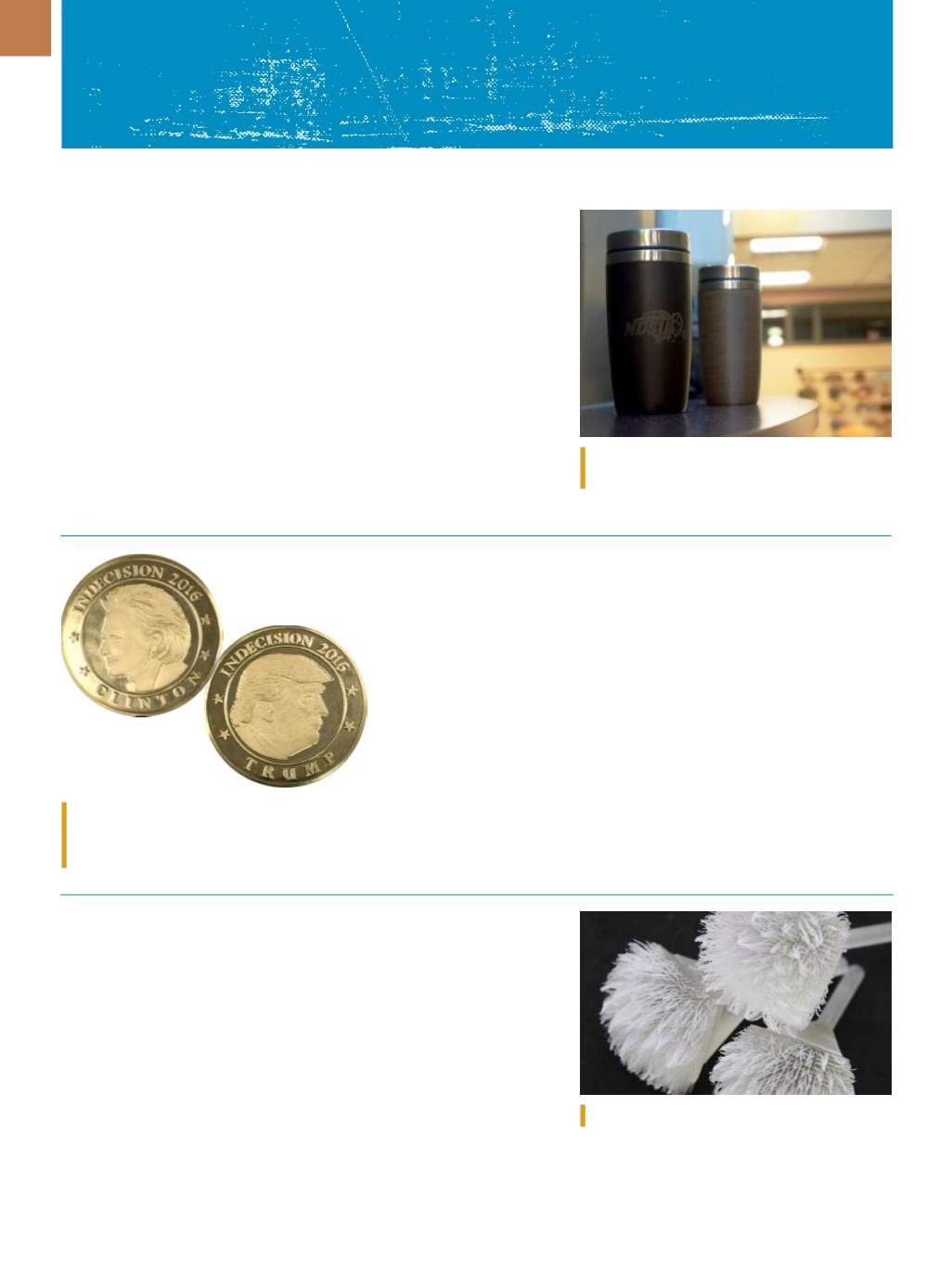

6 2
STRESS RELIEF
COFFEE CUP TAKES ON WHOLE NEW MEANING
3DomFuel, Fargo, N.D., created specialty 3D-printing filaments by add-
ing value to waste byproducts. Buzzed is the first beer filament, made using
byproducts from the brewing process. The outcome creates visible grain frag-
ments and natural color gradients on the finished 3D-printed products.
There is also a filament made partially with coffee waste, called Wound
Up. It has a distinct coffee color, and even smells like coffee while printing. The
filament generates products with a rich brown color and a noticeable natural
grain. Using Wound Up, c2renew, also in Fargo, created a 3D-printed coffee
mug, so people can literally drink coffee out of a “coffee” cup.
Finally, 3DomFuel released a hemp filament called Entwined, which uses
no dyes, allowing it to maintain a natural brown hue. It is almost iridescent in
its ability to showcase different shades and densities within the same printed
object.
3dfuel.com.
3D PRINTING OVERCOMES HAIRY CHALLENGE
Researchers in Massachusetts Institute of Technology’s Media Lab, Cam-
bridge, found a way to bypass a major design step in 3D printing, to quickly and
efficiently model and print thousands of hairlike structures. Instead of using
conventional computer-aided design (CAD) software to draw thousands of
individual hairs on a computer—a step that takes hours to compute—the team
built a new software platform called cilllia that lets users define the angle,
thickness, density, and height of thousands of hairs, in just a few minutes.
Using the new software, researchers designed arrays of hairlike structures
with a resolution of 50
μ
m. Playing with various dimensions, they designed and
then printed arrays ranging from coarse bristles to fine fur, onto both flat and
curved surfaces, using a conventional 3D printer. Could the technology be used to print wigs and hair extensions? Possibly, say
researchers. But that is not their end goal. Instead, they are seeing how 3D-printed hair could perform useful tasks such as sensing,
adhesion, and actuation.
news.mit.edu.
COIN TOSS COULD CURE POLITICAL UNCERTAINTY
At Long-Stanton Manufacturing Co., West Chester, Ohio, the similarity of
the presidential race of 1860 and 2016 lies not in the issues but in the name of
the company’s founder, John Stanton. Records show that before Stanton start-
ed Long-Stanton Manufacturing in 1862, he owned a company in Cincinnati
that provided the illustrations, made the stamping die, and minted many of the
campaign coins of the 1860 presidential candidates. The coins contained the
etched, illustrated likeness of each candidate and were handed out to voters
asking for their support.
Today, the company honors this legacy by minting an “Indecision 2016”
campaign coin. One side features an illustrated likeness of Republican nomi-
nee Donald Trump and the other features Democratic challenger Hillary Clin-
ton. But don’t take this coin into the voting booth—it could be distracting to
those who have already made up their mind, or they may ask to borrow it.
longstanton.com.
Etched likeness of Democratic candidate Hillary
Clinton facing left and Republican candidate Don-
ald Trump facing right. Courtesy of Business Wire.
Wound Up, a 3D-printing filament made partially from
coffee waste, was used to 3D print this coffee cup.
MIT researchers attached 3D-printed hairs to a ring.
A D V A N C E D M A T E R I A L S & P R O C E S S E S | S E P T E M B E R 2 0 1 6


















